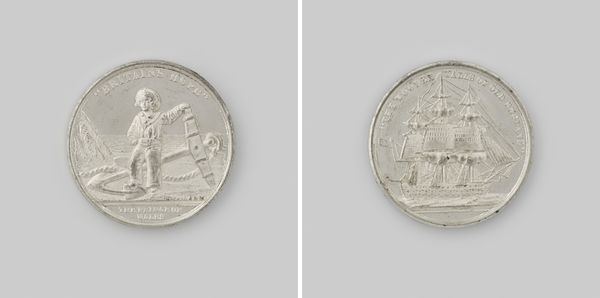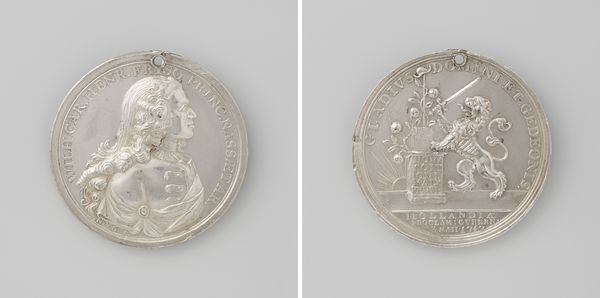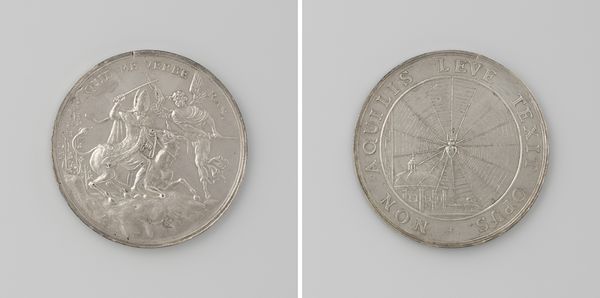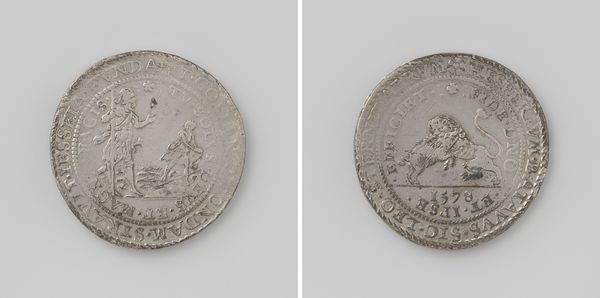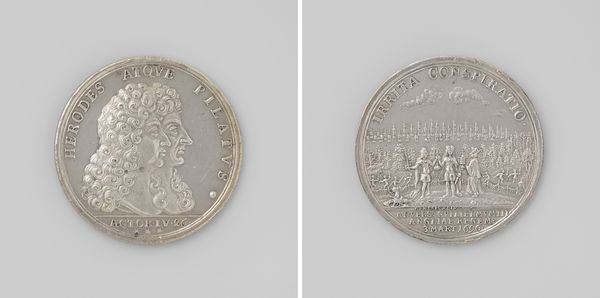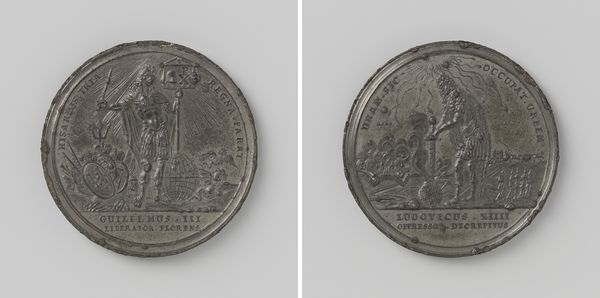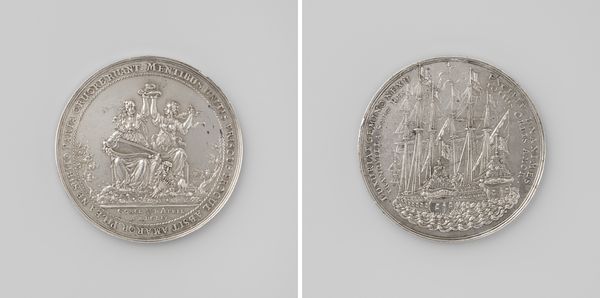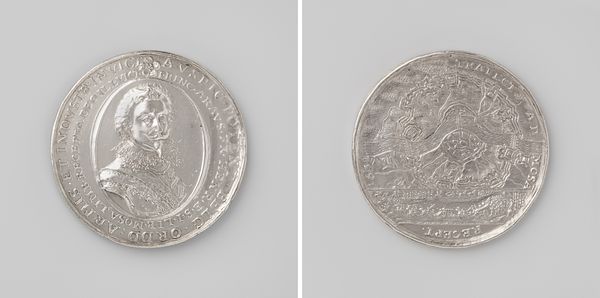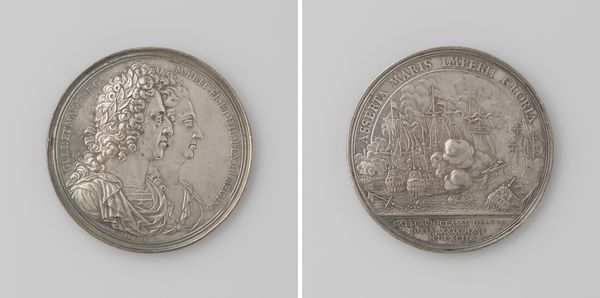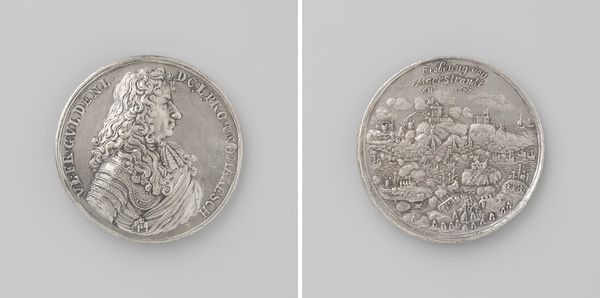
print, metal, engraving
#
allegory
#
baroque
# print
#
metal
#
history-painting
#
engraving
Dimensions: diameter 4.4 cm, weight 30.75 gr
Copyright: Rijks Museum: Open Domain
Curator: A double-sided medal, quite small. One side presents a very detailed image of a ship in turbulent waters. Editor: Stark and silvery; there's a rather coldness emanating from it, despite its clear celebratory purpose. What is the object about? Curator: This engraving on metal is titled "The Peace of Breda", created in 1667 by Christoffel Adolphi. It commemorates the end of the Second Anglo-Dutch War. The symbolism is rife on both sides, not just in that powerful warship. Editor: The craftsmanship itself strikes me; see the subtle rippling of the waves? Or the detailed rigging, meticulously reproduced in metal. And yet, given its small size, this fine detail feels more illustrative than artistically expressive. What symbols beyond the ship did Adolphi employ? Curator: Well, on the other side, you have elaborate heraldic shields, royal crowns, crossed batons... These are pretty typical peace emblems. They signified unified authority, stability after conflict. It really embodies that Baroque allegorical style—the urge to condense so much history and hope into compact visual markers. Editor: Are these markers still relevant today, though? Do the images—shields, crowns, ships—still resonate with a contemporary audience? Curator: Perhaps not as directly, but the human desire for peace, for stable leadership, for triumphant return. I'd argue these needs are perennial. The artist used this object as a form of public memory. By imprinting peace on this token, he was hoping to preserve not just historical details but also the *feeling* of relief that followed. Editor: A noble thought! The engraving quality almost suggests this was mass-produced. If these medals were commonly available, how would they be perceived, for example, by someone whose loved ones might have been lost at sea? The images suggest peace and unity, but trauma persists long after any treaty is signed. Curator: Exactly; historical objects carry a lot of emotion, sometimes competing narratives woven into the imagery. So much symbolism that demands interrogation! Editor: Yes, an intricate object, far more than mere political memorabilia.
Comments
No comments
Be the first to comment and join the conversation on the ultimate creative platform.
